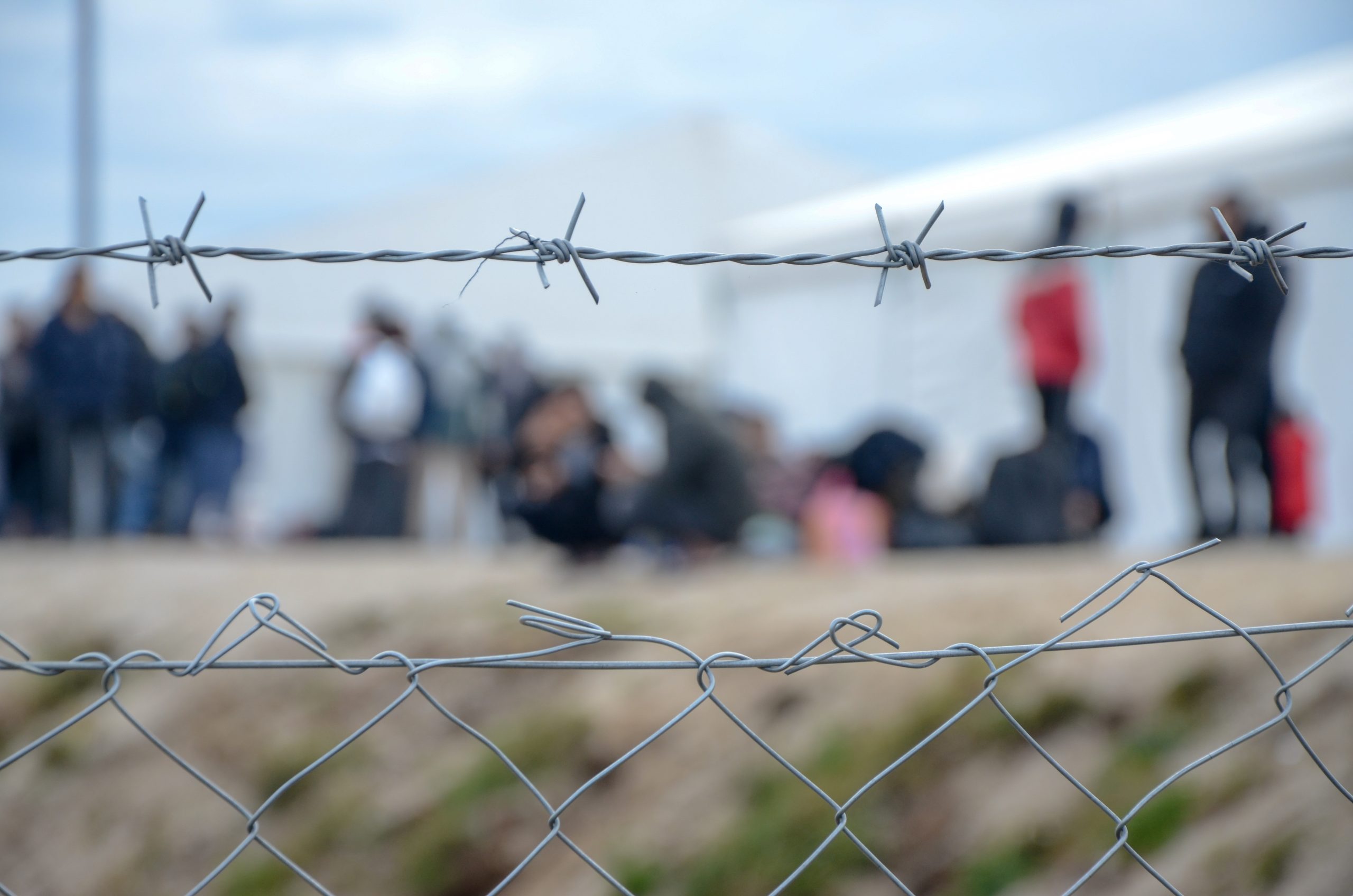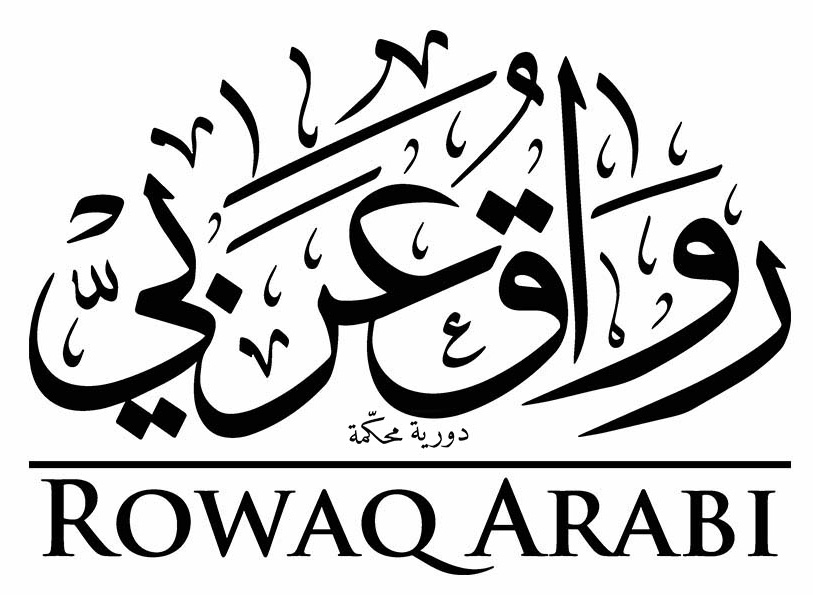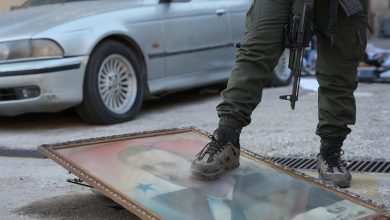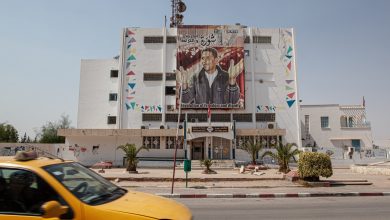Views: The Dark Side of Nationalism; Exclusion and Violence Against Syrian Refugees in Lebanon

Citation: Aldardari, Sima (2024) ‘Views: The Dark Side of Nationalism; Exclusion and Violence Against Syrian Refugees in Lebanon’, Rowaq Arabi 29 (1), pp. 129-137, DOI: 10.53833/JKVG2680.
The presence of Syrian refugees in Lebanon, coupled with a struggling economy and corrupt governance, has deepened Lebanese grievances, resulting in widespread xenophobia and scapegoating against Syrians.[1] As such, over the past decade, legal and social pressure against Syrians in Lebanon has increased, including labour market limitations, border restrictions, forced evictions, and curfews specifically targeting Syrians.[2] However, violence triggered by xenophobia skyrocketed following the murder of Pascal Sleiman on 7 April 2024, a coordinator for the Christian Lebanese Forces (LF) in Northern Lebanon, by a group of Syrian men during an attempted carjacking.[3] This incident led to military raids on refugee camps and random attacks on Syrians in the streets, as political elites used Sleiman’s murder to prove that Syrian refugees are dangerous and justify xenophobic actions and policies.
However, such sentiments are not new. Syrian refugees have been blamed for all the ills of the country and framed as a threat to the sovereignty of the nation for years now. Nations create solidarity among people but exclude others. Benedict Anderson views nations as ‘imagined communities’; where a sense of belonging is formed among people who will never meet but share a collective image of unity.[4] Nationalism entails ‘deep, horizontal comradeship’;[5] albeit a limited one. In fact, the capacity of the nation-building state to embrace social, cultural, and political diversity is at the centre of a highly contentious discourse on nationalism.[6] As Michael Billig notes, ‘the triumph of a particular nationalism is seldom achieved without the defeat of alternative nationalisms and other ways of imagining peoplehood.’[7] Thus, while nationalism can foster unity, it also results in ‘racism, xenophobia, and beliefs of national superiority based on the classical division between ‘us’ and ‘them”.[8] Particularly, refugees and immigrants bear the brunt of the adverse impacts of nationalism, often finding themselves excluded from the ‘ideal citizen’ category due to their ethnic background[9] and legal status.[10]
This article is a reaction to recent attacks on Syrians in Lebanon and an effort to shed light on one of the ignored consequences of rising institutional and social xenophobia against refugees, by situating xenophobia as a byproduct of nationalism. It aims to begin a discussion on the impacts of increasing xenophobia on Syrian refugees’ self-perception and view of their own national identities as they navigate ongoing stereotyping and discrimination, what Frantz Fanon refers to as ‘internalisation.’[11] The paper builds on my personal insights as a Syrian, as well as my PhD research at the University of St. Andrews, which explores the impact of forced displacement on the national identifications of Syrian refugee youth in Beirut, Berlin, and Istanbul, based mainly on fieldwork and interviews. It highlights that xenophobia in Lebanon, deeply rooted in nationalistic ideologies, severely impacts Syrian refugees’ perceptions of their own nationality and self as they try to navigate hostile settings.
Nationalism and Exclusion
Ernest Renan describes a nation as ‘a soul, a spiritual principle’[12] that unites people through ‘a rich legacy of memories.’[13] However, this sense of identity is intrinsically based on difference. Edward Said explains this by writing that ‘successful nationalisms consign truth exclusively to themselves and relegate falsehood and inferiority to outsiders,’[14] echoing Billig’s argument that ‘nationhood always operates within contexts of power.’[15] Nationalism is often ‘attended by conflict and violence,’[16] where ‘a particular form of identity has to be imposed.’[17] Refugees often find themselves in the ‘Outsider’ category of this imposed identity and stripped of the rights citizens hold due to ‘the exclusionary principles of the state.’[18]
The rise in the number of forcibly displaced populations in the last decade, with over 114 million refugees currently displaced worldwide,[19] has also led to a rise in xenophobia and nationalistic sentiments against refugees.[20] As forced migration increases, immigrants and refugees are increasingly seen as the ‘racialized Other,’ facing discrimination based on unchangeable traits like skin colour and birthplace.[21] This often results in xenophobia, which Mikael Hjerm defines as ‘a negative attitude towards, or fear of, individuals or groups of individuals who are in some sense different (real or imagined) from oneself, or the group(s) one belongs to.’[22] Understanding the relationship between xenophobia and nationalism is crucial, as xenophobia ‘is guided by an interrogation of the attachment to the nation and to its promise as a rhetorical terrain.’[23] Hjerm argues that nationalistic attitudes result in feelings of national superiority over members of other nations.[24] For refugees, these feelings are often more complicated by the fact that they do not belong to any nation, or simply cannot go back to theirs. As such, refugees are often considered by the state as ‘responsible for all the failures of the social order’[25] and are stigmatised and criminalised politically, socially, and economically due to national values that foreground law and order which views them as a threat.[26] Refugees ‘bear the stigma of being ‘alien’ with no legal claim on the state and are therefore stateless.’[27] Regardless of who they are or what they do, they remain outlaws in the eyes of the state and its citizens, and are blamed ‘for all the failures of the social order.’[28] This situation is particularly true for Syrian refugees in Lebanon, whose experience of xenophobia is also charged with a troubled history between the two countries and demographic and political tensions.
National Framework and Fear of Demographic Dominance
Lebanon’s national and social framework has been profoundly influenced by its historical and demographic context since its mandate period when France proclaimed the country’s independence in 1941, with the state established in 1920.[29] To create the Lebanese state we know today, Mount Lebanon, the ‘core of greater Lebanon,’[30] which was mainly inhabited by Maronites and Druze, was expanded to incorporate diverse regions and ethnic groups, including Sunnis and Shiites. The 1943 National Pact, an unwritten agreement between Maronite and Sunni leaders, was forged to manage this diversity. It defined Lebanon as a ‘country with an Arab face and Arab language,’ yet with a ‘special character’[31] and established the country’s sectarian power-sharing political structure. From then, the Lebanese national identity was built on ‘political regime structures’ of ‘ethnic power relations’ based on a system of ‘consociational power-sharing that guarantees political power and state resources to the country’s numerous sectarian communities on the basis of their relative populations.’[32]
These dynamics impact how the Lebanese population views Syrian refugees today, as Christian Lebanese are more wary of the Syrian refugees’ presence than other sects in Lebanon. Syrians, who are mostly Sunnis, present an ‘existential threat’[33] to the political standing and stability of Lebanese Christians, and their presence tips the demographic balance in the country. Xenophobic attitudes are also influenced by Lebanon’s history with Palestinian refugees, who settled in the country after the nakba of 1948. The Palestinian Liberation Organization (PLO) retaliated against Israel from neighbouring countries including Lebanon, thus having military power within a sovereign state. Instability caused by these developments aided in triggering the 1975 civil war,[34] where Palestinians and Christian political parties were in conflict and ‘committed a series of horrific massacres against civilians from the opposing group’s ethnic base.’[35]
The Lebanese population’s history with the Syrian government’s occupation and ‘struggle for domination’[36] of Lebanon from 1975 till 2005 further contributes to current fear of Syrian refugees. When the civil war erupted, the Syrian regime became one of the key actors, providing support or combatting different warring militias based on its geopolitical interests. This history intensified grievances against Syrians, especially after the assassination of Rafik Hariri, due to the perceived role of the Assad regime in it.[37] This also heightened ‘refugee phobia’[38] among the Lebanese, where Syrian refugees are perceived as a threat to the sovereignty of an already divided nation, carrying the burden of their oppressive government’s actions. This history has informed the government’s securitisation policy towards Syrians and its opposition to permanent settlements and refusal to categorise Syrians as refugees, thereby limiting their rights.[39]
Reinkowski argues that ‘national identity in Lebanon has come into existence through a complex process — the common experience of a state, the simultaneous experience of war and the failure of competing ideologies and nationalisms.’[40] The Syrian refugee experience in Lebanon is therefore rooted in this context of contested nationalism and various struggles for demographic and political survival and/or domination. Lebanese nationalism has had to adapt to the arrival of millions of Syrians into its borders, which unintentionally threatens the country’s composition and power-sharing arrangements, which have remained central to the country’s political identity. What is being pushed for by political elites, however, is a sense of unity based on differences with Syrians, and a distraction from their own responsibilities in the country’s turmoil. Such discourse is presented by ‘Lebanese sectarian politicians’ ‘ as ‘a form of nationalism, which rejects the rights of non-Lebanese in the country, with refugees particularly targeted.’[41]
Syrian Refugees in Lebanon: Stuck in Limbo
There are around 1.5 million Syrian refugees in Lebanon, only 790,000 of whom are registered with the UNHCR, and half of whom are under eighteen years old.[42] This, for a country already struggling financially and politically, increases vulnerability for all inhabitants, with the EU estimating around 2.05 million Lebanese are vulnerable.[43] On the other hand, around ninety per cent of Syrians in Lebanon live in extreme poverty, and eighty per cent lack legal residency as a consequence of the government ending its ‘open border policy’ in 2015 and banning the UN from registering Syrians.[44] Syrian refugees in Lebanon also do not have their basic rights guaranteed as Lebanon is not a signatory of the Refugee Convention of 1951, nor the 1967 Protocol, which strips Syrians of their rights to medical care and education, and the right to work.[45]
With now more than a decade since they arrived in Lebanon, and economic and political conditions worsening, grievances against Syrians have been on the rise. Refugee phobia was heightened with the murder of Pascal Sleiman, whose body was found in Syria and returned to Lebanon by Syrian authorities, which prompted LF officials to hint that Hezbollah and the Syrian government might be involved.[46] It was neither of those parties, however, who took responsibility or the blame. Instead, Syrian individuals, running away from both these parties, were attacked and threatened. Xenophobic discourse framing Syrians as a threat to Lebanese nationalism and sovereignty intensified, with political leaders encouraging such rhetoric and advocating for deportations and additional restrictive measures. This includes Interior Minister Bassam Mawlawi, who ordered security forces to ‘strictly enforce Lebanese laws on Syrian refugees’ and called for their deportation,[47] and the head of the LF Party, Samir Geagea, who explained during a press conference that ‘a nation cannot bear the burden of another, especially in Lebanon, where the economic situation is dire, risking the loss of our homeland.’[48] Additionally, social media began to be flooded with videos of LF supporters randomly attacking Syrian individuals in the street and of mobs looting Syrian-owned businesses and apartments where Syrians reside, and vandalising cars with Syrian licence plates. A few days after Sleiman was murdered, a group of men in the Christian-dominated Bourj Hammoud area circled the area on motorcycles, shouting through a microphone that all Syrians residing there have forty-eight hours to evacuate,[49] while municipalities imposed curfews and closed Syrian-owned businesses.
Even before Sleiman’s death, Lebanese officials have consistently framed Syrians as threats, including Lebanon’s economy minister Amin Salam, who said in early April that the Lebanese government needs to ‘declare a state of emergency’ with regards to Syrian refugees.[50] Syrians have been facing discrimination in Lebanon for years now, from beatings in the street to curfews imposed by local municipalities.[51] Such attitudes are expressed on Lebanese news channels as well, with xenophobic media campaigns such as one with a slogan for a campaign against Syrians that says ‘undo the damage, before it’s too late.’[52] Such ads frame Syrian refugees as invaders, not as people fleeing from war. By placing responsibility on refugees for the country’s economic and political turmoil, the Lebanese government and populace maintain a fear of demographic dominance, which is based on a national framework aiming to balance power based on Lebanon’s social and political dynamics that Syrians unintentionally disrupt.
Navigating Stereotypes and Xenophobia
In Black Skin, White Masks, Frantz Fanon presents a psychoanalysis of colonialism and the encounter with the white man. As a result of the power dynamic of colonialism and its weaponization of race, Fanon argues that the colonised develop an inferiority complex by internalising colonial ideologies and perceptions of them. Although Fanon wrote in the context of colonialism, he argues that ‘all forms of exploitation resemble one another’ and that ‘colonial racism is no different from any other racism.’[53] Therefore, just as colonialism reproduces power dynamics based on race, nationalism reproduces power dynamics between those who belong as ‘citizens’ and those who do not.
Applying Fanon’s approach to understanding the experience of Syrian refugees in Lebanon reveals similar dynamics of internalised inferiority and identity conflict, especially as they face physical and verbal attacks due to their nationality. Refugees experience feelings and self-perception of inferiority stemming from unequal power dynamics rooted in nationalism, race, and ethnicity.[54] When refugees experience unwelcoming attitudes towards their national identity, it inevitably affects their perception of that identity. This is evident in the testimonies of many Syrian participants in my PhD research in Beirut, who expressed animosity or ambivalent feelings toward Syria due to their negative experiences stemming from their prescribed national identity and the ethnic stereotypes they regularly encounter in Lebanon, making it difficult to develop a sense of belonging to either country.
This phenomenon is eloquently captured by Rita Al-Jundi, a young Syrian woman living in Beirut, who writes about her reflections following Pascale’s murder:[55]
There was one day left before the supposed eviction, and I had lost any sense of security, completely consumed by darkness. I wandered through the house I lived in like a stranger, angry at myself and at being Syrian; at my choices and my inability to control my destiny, and at the harsh memories that had become a written fate. I was angry because I would have to leave my studies again if things went wrong, or even live with these delusions and obsessions every day.
Vos et al. examine the impact of xenophobia on adolescent Latino immigrants in the United States and find that xenophobia significantly influences immigrant youths’ cultural stressors, which are ‘difficulties experienced as a direct result of one’s ethnic or national background.’[56] The authors argue that cultural stressors have a high impact on adolescents who are already in the process of developing their personal and cultural identities. Therefore, they find that when adolescents feel stigmatised due to their ethnicities on a regular basis, this negatively impacts how they perceive themselves and their ethnic group.[57] This mirrors Fanon’s concept of internalisation, where individuals view themselves through the stagnant and racist image imposed by those in power.
Internalisation forces individuals to adopt different methods of adaptation to cope with negative perceptions. In Begüm Dereli’s examination of the experiences of Syrian youth with higher education in Gaziantep, Turkey, she highlights similar dynamics. Dereli finds that while being a university student fosters a sense of belonging among Syrian youth, persistent local stereotypes on campus adversely affect their sense of place-belonging.[58] In response to marginalisation, these young people employ strategies to navigate their politicised environments. For example, they use their student identity cards for tangible benefits beyond the campus, such as access to student discounts for transportation and accommodation, enhanced mobility, and as an alternative ID card to temporary protection cards, which often elicit negative reactions. Another significant example Dereli provides is that of a nineteen-year-old Syrian student who carries university books while using public transportation ‘to protect herself from prejudice and to increase positive attitudes towards her,’[59] signalling her educated status—an identity that diverges from local stereotypes about Syrian refugees, which often depict them as uncivilised and uneducated. This effort to avoid looking, sounding, and acting ‘Syrian’ is similar to many of my PhD participants in Beirut, who expressed that they change the way they dress to avoid ‘looking Syrian.’ For example, some men avoided wearing hats to not look like a ‘Syrian refugee labour worker’ or trimmed their beard like ‘the Lebanese people do,’ while many young Syrian women explained that they completely changed their dressing style, including their hijab, in order to assimilate. This indicates a degree of internalisation of such stereotypes, stemming from necessity. Syrian refugees, like all refugees, are always in a constant struggle to belong, always trying to come to terms with the curse of being an outsider. Al-Jundi touches on this in her article and writes: ‘How I wished that I had softened my heavy accent or abandoned it completely, and memorised some basic responses in the Lebanese dialect, or some French or English words without an accent.’[60]
Conclusion
The plight of Syrian refugees in Lebanon vividly illustrates the destructive power of xenophobia fuelled by nationalism on refugees, especially in a country where the struggle for a unified national identity is still ongoing. Additionally, economic hardship and political instability have led many Lebanese citizens and politicians to increasingly turn against Syrians, framing them as the root cause of various national problems and a demographic threat. This hostility is deeply rooted in Lebanon’s history with refugees and Syria, and its demographic context, where fears of population shifts and political imbalance exacerbate tensions. The presence of Syrian refugees adds further instability to an already unstable situation.
The introduction of immigrants into a nation brings forth racial, linguistic, religious, and cultural differences, challenging the notion of homogeneity within the body politic.[61] Xenophobia, a form of othering based on nationalism, exacerbates these tensions, isolating and alienating refugees worldwide. Faced with discrimination on a regular basis due to their nationality, ethnicity, and/or race, refugees, particularly refugee youth, may internalise negative stereotypes and adapt their identities in response to the pervasive xenophobia they encounter. For Syrians in Lebanon, these adaptations, such as changing the way they dress or trying to change their Syrian accents, reflect a profound impact on their self-perception and sense of belonging. The toll of being perpetually viewed as ‘the Other’ erodes their national identity and self-esteem, leaving them in a constant struggle to reconcile their Syrian heritage with their experiences of rejection in Lebanon and elsewhere. As such, additional research is required to understand the complex processes of internalisation and their profound impacts on Syrians in exile, while also taking into account the impacts of the efforts of solidarity and support by many Lebanese citizens.
[2] Kikano, Faten, Gabriel Fauveaud, and Gonzalo Lizarralde (2021) ‘Policies of Exclusion: The Case of Syrian Refugees in Lebanon’, Journal of Refugee Studies 34, (1), https://doi.org/10.1093/jrs/feaa058.
[3] Christou, William (2024) ‘Killing of Lebanese Forces Politician Sparks Fury on Syrians’, The New Arab, 9 April, accessed 30 April 2024. https://www.newarab.com/news/killing-lebanese-forces-politician-sparks-fury-syrians.
[4] Anderson, Benedict (2006) Imagined Communities: Reflections on the Origin and Spread of Nationalism. (London: Verso) pp: 6.
[5] Ibid, pp: 7.
[6] Erez, Lior (2020) ‘Liberal Nationalism, Immigration, and the Problem of Multiple National Identities’, Critical Review of International Social and Political Philosophy 23(4), https://doi.org/10.1080/13698230.2018.1479816.
[7] Billig, Michael (1995), pp: 28.
[8] Hjerm, Mikael (2001) ‘Education, Xenophobia and Nationalism: A Comparative Analysis’, Journal of Ethnic and Migration Studies 27 (1), p: 47, https://doi.org/10.1080/13691830124482.
[9] Kayaalp, Dilek (2022) ‘Transnational Identities in the Canadian Context: Kurdish Refugee Youth as Actors and Citizens’, Race Ethnicity and Education 25, (6), https://doi.org/10.1080/13613324.2020.1718081.
[10] Halabi, Nour (2022) Radical Hospitality: American Policy, Media, and Immigration (New Jersey: Rutgers University Press), https://doi.org/10.36019/9781978827752.
[11] Fanon, Frantz (2008) Black Skin, White Masks (Pluto Press: London).
[12] Renan, Ernest (1990) ‘What Is a Nation?’, in Homi Bhabha (ed.) Nation and Narration (London and New York: Routledge) pp:19.
[13] Ibid.
[14] Said, Edward (2001) Reflections on Exile and Other Essays (Cambridge: Harvard University Press) pp: 182-183.
[15] Billig, Michael (1995) Banal Nationalism (London: Sage) pp: 4.
[16] Ibid, pp: 27.
[17] Ibid.
[18] Kayaalp, Dilek (2022) ‘Transnational Identities in the Canadian Context’, pp: 799.
[19] United Nations (2023) ‘Over 114 Million Displaced by War, Violence Worldwide’, UN News, 25 October, accessed 10 May 2024, https://news.un.org/en/story/2023/10/1142827.
[20] Roche, Kathleen M., Bernhard Streitwieser, and Seth J. Schwartz (2022) ‘A Call for Research on Immigrant and Refugee Youth amidst the Global Rise in Xenophobia and Nationalism’, International Journal of Intercultural Relations, 90, https://doi.org/10.1016/j.ijintrel.2021.10.001.
[21] Halabi, Nour (2022) Radical Hospitality, pp: 8.
[22] Hjerm, Mikael (2001) ‘Education, Xenophobia and Nationalism’, pp: 43.
[23] Mupotsa, Danai, and Dorothee Kreutzfeldt (2016) ‘Xenophobia, Nationalism and Techniques of Difference’, Agenda 30 (2), pp: 14, https://doi.org/10.1080/10130950.2016.1227542.
[24] Hjerm, Mikael (2001), pp: 47.
[25] Kayaalp, Dilek (2022), pp: 779.
[26] Ibid.
[27] Ibid.
[28] Ibid.
[29] Reinkowski, Maurus (1997) ‘National Identity in Lebanon since 1990’, Orient, 38 (3), pp: 499.
[30] Ibid.
[31] Ibid.
[32] Selsky, Sam (2024) ‘Denigrating Democracy: How Electoral Competition Fuels Xenophobia in Lebanon’, ELECTORAL STUDIES, 88, pp: 3, https://doi.org/10.1016/j.electstud.2024.102770.
[33] Anouti, Hani, and Antea Enna (2023) ‘Social Instability in Fragile State Context: Exploring the Dynamics Between Syrian Refugees and the Lebanese Host Community in Lebanon’, Contemporary Review of the Middle East, 10 (4), pp: 366, https://doi.org/10.1177/23477989231198328.
[34] Ibid.
[35] Selsky, Sam (2024) ‘Denigrating Democracy’, pp: 4.
[36] Reinkowski, Maurus (1997) ‘National Identity in Lebanon since 1990’, pp: 500.
[37] Itani, Faisal (2023) ‘The Hariri Assassination and the Revolution That Never Was’ New Lines Magazine, 14 February, accessed 15 April 2024, https://newlinesmag.com/first-person/the-hariri-assassination-and-the-revolution-that-never-was/.
[38] Anouti, Hani, and Antea Enna (2023) ‘Social Instability in Fragile State Context’, pp: 361.
[39] Ibid, pp: 367.
[40] Reinkowski, Maurus (1997) pp: 512.
[41] Rønn, Anne Kirstine (2022) ‘Can National Unity Cure Sectarian Division? The Potential Pitfalls of Nationalist Protest Discourses’, The Foreign Policy Centre, par 8, 19 July, accessed 15 April 2024, https://fpc.org.uk/can-national-unity-cure-sectarian-division-the-potential-pitfalls-of-nationalist-protest-discourses/.
[42] UNHCR (2024) ‘Lebanon at a Glance’, accessed 1 May 2024, https://www.unhcr.org/lb/at-a-glance#:~:text=Lebanon%20remains%20a%20country%20hosting,11%2C238%20refugees%20of%20other%20nationalities.
[43] European Civil Protection and Humanitarian Aid Operations (2024) ‘Lebanon’, European Commission, accessed 10 April 2024, https://civil-protection-humanitarian-aid.ec.europa.eu/where/middle-east-and-northern-africa/lebanon_en.
[44] Karasapan, Omer and Sajjad Shah (2021) ‘Why Syrian Refugees in Lebanon Are a Crisis within a Crisis’, Brookings, 15 April, accessed on 15 April 2024, https://www.brookings.edu/blog/future-development/2021/04/15/why-syrian-refugees-in-lebanon-are-a-crisis-within-a-crisis/.
[45] Yahya, Maha, Jean Kassir, and Khalil el-Hariri (2018) ‘Policy Framework for Refugees in Lebanon and Jordan – Unheard Voices: What Syrian Refugees Need to Return Home’, Carnegie Middle East Center, 16 April, accessed on 16 April 2024, https://carnegieendowment.org/research/2018/04/unheard-voices-what-syrian-refugees-need-to-return-home?lang=en.
[46] Hijazi, Salah (2024) ‘What We Do and Don’t Know about the Murder of Pascal Sleiman’, L’Orient Today, 9 April, accessed on 9 April 2024, https://today.lorientlejour.com/article/1409814/what-we-do-and-dont-know-about-the-murder-of-pascal-sleiman.html.
[47] Tello, Anan (2024) ‘Why Displaced Syrians in Lebanon Face an Agonizing Dilemma amid Mounting Hostility’, Arab News, 18 April, accessed 10 April 2024, https://www.arabnews.com/node/2494941/middle-east.
[48] The Arab Weekly (2024) ‘Geagea Warns Against Presence of Syrians Refugees in Lebanon’, accessed 30 April 2024, https://thearabweekly.com/geagea-warns-against-presence-syrians-refugees-lebanon.
[49] Nelson, Mateo (2024) ‘Fear Grips Syrian Communities as Violence Surges in Lebanon’ Syria Direct, 23 April, accessed on 17 April 2024, https://syriadirect.org/fear-grips-syrian-communities-as-violence-surges-in-lebanon/.
[50] Tello, Anan (2024) ‘Why Displaced Syrians in Lebanon Face an Agonizing Dilemma amid Mounting Hostility’.
[51] Arab News (2022) ‘UN Body Says Violence Against Syrians in Lebanon on the Rise’, 29 July, accessed 20 April 2024, https://www.arabnews.com/node/2131981/%7B%7B.
[52] Christou, William (2024) ‘Killing of Lebanese Forces Politician Sparks Fury on Syrians’.
[53] Fanon, Frantz (2008) Black Skin, White Masks, pp: 65.
[54] Roche, Kathleen M., Bernhard Streitwieser, and Seth J. Schwartz (2022) ‘A Call for Research on Immigrant and Refugee Youth amidst the Global Rise in Xenophobia and Nationalism’;Vos, Saskia R., Cho Hee Shrader, Vanessa C. Alvarez, Alan Meca, Jennifer B. Unger, Eric C. Brown, Ingrid Zeledon, Daniel Soto, and Seth J. Schwartz (2021) ‘Cultural Stress in the Age of Mass Xenophobia: Perspectives from Latin/o Adolescents’, International Journal of Intercultural Relations, 80, https://doi.org/10.1016/j.ijintrel.2020.11.011.
[55] Al-Jundi, Rita (2024) ‘Zahara umri fi Beirut, fakhudhhu, Suwar min yawmiyat suriyya fi Lubnan’ [My Life Bloomed in Beirut, so Take it, Snapshots from the Daily Life of a Syrian Woman in Lebanon], Aljumhuriya, 13 May, accessed 15 May 2024, https://rb.gy/2j8zje.
[56] Vos et. al (2021) ‘Cultural Stress in the Age of Mass Xenophobia’, pp: 218.
[57] Ibid: 219.
[58] Dereli, Begüm (2022) ‘Belonging through Higher Education: The Case of Syrian Youth in Turkey’, Journal of Refugee Studies, 35 (1), pp: 198, https://doi.org/10.1093/jrs/feab055.
[59] Ibid: 213.
[60] Al-Jundi, Rita (2024).
[61] Halabi, Nour (2022), pp: 8.
Read this post in: العربية





